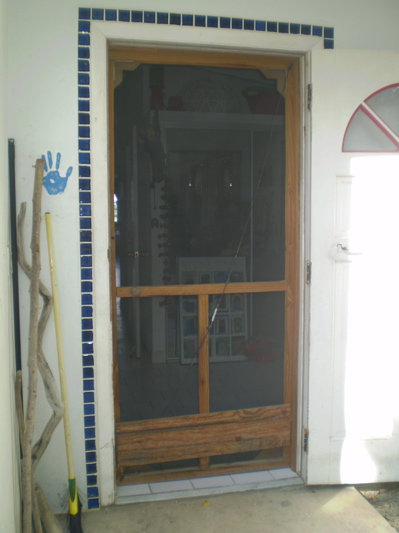
“As we age we run into issues that make mobility difficult even in our own homes,” says Mark Vinzant, spokesman for the Virgin Islands Coalition for Visitability.
The Coalition for Visitability is comprised of five groups that banded together in 2007 to focus on accessible entrances, interiors and bathrooms for seniors and people with disabilities. The groups are AARP Virgin Islands, Virgin Islands University Center for Excellence on Developmental Disabilities, Disability Rights Center of the V.I., V.I. Association for Independent Living and Americans with Disabilities Ad Hoc Committee.
These groups advocate and work together to promote their common interest in homes that allow families to care for and visit each other as they experience the limitations of age or disability.
There are three simple visitability features advocates are working for.
At least one entrance to the home should be accessible without any steps and located on a continuous and an unobstructed path from the public street or driveway. It should not exceed one inch rise for every 12 inches in length and the width should be more than 36 inches. All first floor doors and passageways should be at least 36 inches wide. The first floor bathroom should have a clear space of 30 inches by 48 inches centered on the sink, allowing a person in a wheelchair to enter and close the door, use the fixtures, reopen the door, and exit. Also included should be support grab bars strong enough to support 300 pounds.
According to Vinzant, people with disabilities often have a tough time finding suitable housing to rent or buy. Visitability home-features allow people with disabilities or aged people to stay in their own homes and avoid costly institutional care.
“Accessibility isn’t cheap,” Vinzant says. “The cost and disruption of retrofitting an existing home for accessibility is expensive.”
The increased cost of constructing a residence with accessibility in the first place is minimal according to Vinzant.
Vinzant says The Virgin Islands Coalition proposed legislation in March 2008 with tax incentives for homeowners to participate in an effort to make living in their own home as they age or develop a disability easy and comfortable.
The proposed Visitable Home Design Act was given to former Sen. James A. Weber. The intent of the legislation is to establish minimum regulations and tax incentives for design, construction, installation, and certification of newly built and renovated single, duplex and triplex dwellings that provide accessibility. The incentive of a 20 percent property tax deduction for 10 years is to encourage voluntary compliance.
Vinzant says at this point the bill has gone nowhere. He thinks the proposed legislation is languishing in the senate because of the property tax lawsuit the government is in now.
“All the senators spoke favorably about the proposal,” Vinzant says. “A number of the senators wanted the bill and to run with it. In time the issue of property taxes will clear up and the senators will realize how good they’ll look and smell,” says Vinzant.
“Homeowners will realize the wisdom of the voluntary incentive,” says Vinzant. “Life is such that nobody knows what the future holds for them.”
Vinzant wants local citizens to tell the senators there is still an interest in the Visitable Home Design Act.